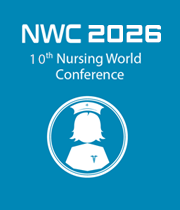Title : Addressing workplace violence: Insider secrets to achieving positive organizational outcomes
Abstract:
Project Overview
Workplace violence in healthcare extends beyond emergency and behavioral settings. Executive leadership is challenged with establishing a systems to support the workforce in a challenging work environment. Leaders at a 790-bed, Magnet designated, academic medical center were challenged with establishing a comprehensive, standardized, and evidence-based workplace violence program with a focus on education, mitigation, and infrastructure enhancements. Utilizing a multimodal approach, leaders representing five distinct disciplines led a rapid cycle initiative which resulted in positive employee, patient, and organizational outcomes. Learn the systematic approach utilized by this team which can be replicated to yield similar successes to reduce workplace violence.
Objectives
Objective 1: Describe the process development for a comprehensive, standardized, and evidence-based workplace violence program.
Objective 2: Identify key metrics to measure outcomes of an effective workplace violence program.
Objective 3: List outcomes yielded through the implementation of a comprehensive workplace violence program.
Background
Workplace violence in the healthcare setting is escalating on a daily basis. What once was isolated to behavioral health and emergency room settings, is now prevalent in all areas of the inpatient and ambulatory care settings. Senior leadership quickly realized that a focused effort was needed to address serious patient and employee near misses and injuries as a result of actual acts of violence. In addition, they were astutely aware of the need to be prepared for the unanticipated events with employees, patients and visitors.
Empowering a multidisciplinary steering committee representing security, nursing, education, behavioral and children’s leadership was the initial step in the organization’s reset on a workplace violence program. Input from direct care staff as well as a formalized pivotal leadership team validated leadership’s insight that a drastic improvement was needed.
Workplace violence is not isolated to one area of the country or type of facility. Implementing creative practices can positively impact employee retention as well as patient outcomes. This presentation is critical for the 2020 Vizient Connections Education Summit to share best practices achieved by this organization that can be replicated at other organizations.
Intervention
Five key leaders in the organization were hand selected by executive leadership to begin the reboot of a Workplace Violence Program (WVP) for the organization. The initial step was to evaluate an evidence-based workplace violence prevention training program. During the five-day trip for the AVADE® Workplace Violence Prevention Advanced Instructor training program, the group quickly enmeshed and synergistically began to work together to brainstorm opportunities in their organization.
Upon completion of the course, the team quickly developed an executive overview and proposal including a programmatic objective, structure and process improvements, and desired outcomes. A WVP Model was developed, cost comparison for WVPs, and summary of workplace violence injury data. The team completed a comprehensive assessment including administrative, behavioral, and environmental categories.
The team completed additional work including developing a detailed work plan, review of employee injury, workers compensation, and claims data, developing a multimodal education plan, identification of internal trainers, revising 29 internal policies related to workplace violence, identifying enhancements to internal reporting system, developing recommendations for employee support post event, and meeting with members of a Pivotal Leadership Team.
Throughout the preparation process, the team identified inconsistencies in internal data collection and the inability to benchmark externally. The team developed a dashboard to include metrics including Employee Satisfaction, Patient Satisfaction, Event Reporting (Events and Near Misses), Security Reporting, Patient Injury Reporting by job class, Injury Location (ED, B Med, Inpatient, Outpatient, Other), Workers Compensation (Combative Patient Claims, Non-Zero Claims, Missed Word Days, Dollars Paid), and Training (WVP Classes, WVP Employees Trained, Active Shooter Classes and Employees Trained, Peer-to-Peer Classes, Peer-to-Peer Employees Trained).
Throughout the entire process, the team brought individual strengths to the initiative in which they were approved to provide oversight for a comprehensive, standardized, and evidence-based workplace violence program with focus on education, mitigation, and infrastructure enhancements.
Outcomes
Less than a month after the group returned from the training program evaluation, executive leadership supported their official designation as the Workplace Violence Program Steering Committee and approved out-of-budget cycle funding for program. Multiple structures and processes were implemented from a qualitative perspective. A multi-modal education plan was developed with priority for vulnerable staff and hospital locations that had previously not received formal training. The training plan included staff from entry level positions to providers and administrators. Training included workplace violence mitigation and defense as well as peer support training. Policies and procedures were reviewed and revised in conjunction with human resources and legal services. Standardized practices were implemented such as positioning, verbal de-escalation, electronic medical record documentation, patient handoff and debriefing, and peer support. Response teams were formed related to behavioral emergencies and workplace violence. Environmental enhancements were planned with initial implementation including securing the building, significant expansion of duress buttons, and visitor screenings. A comprehensive marketing campaign began including organizational branding of WVP, ‘zero tolerance’ signage, an intranet “button” to house all WVP information and employee ‘badge buddies’ and unit posters with training techniques.
The team worked diligently to develop a dashboard to track quantitative programmatic outcomes. Baseline data was reviewed and analyzed on Employee and Patient Satisfaction related to security, event reporting for security events and employee injury related to workplace violence, workers compensation data for combative patient claims, non-zero claims, missed work days, and dollars paid. The team plans to collect and report this data, along with training numbers and evaluations, on a quarterly basis to multiple committees. These include environment of care committee, nursing quality council, hospital leadership forum, and the hospital board of directors. It is anticipated that all quantitate and qualitative outcomes will have a positive impact on workplace violence in the organization.
Uniquely Innovative
The Workplace Violence Program utilized an innovative approach of strategically pairing five key leaders in the organization with unique skills sets and varied views on program opportunities. Although a strategy used in other improvement projects, the team had the experience and professional background, as well as personal passion, to work synergistically together in program development and implementation. All team members were completely vested in the program outcomes without personal agendas. Having the energy and drive to make the program a success, the team quickly reached credibility as internal experts and resources for the entire organization related to workplace violence.



